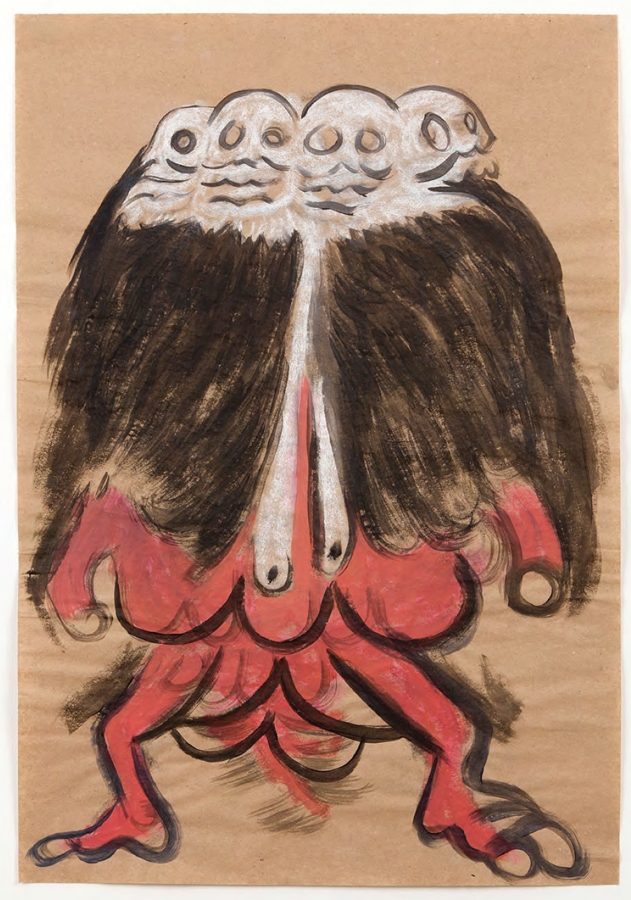Chromosome Damage takes its title from a 1977 song by Chrome, an American experimental rock band. In using that phrase, Daniel Guzmán continues the promiscuous citations from pop culture that date back to his early works, lifting from song lyrics and literary texts, using anything from William Burroughs to AC/DC. With the title he also nods, however, to the monstrous narratives that run through the 30 drawings of monstrous figures on display at the Drawing Room. Hung in lines across all four walls, this crowd of strange creatures reveals trajectories of mutation after a closer look. A seemingly chaotic array of subjects can be broken down into clusters of twos and threes, where the same beast sprouts new body parts, folds in upon itself or just dissolves into lumps of flesh. Sometimes human, sometimes not, often somewhere in between, each character is rendered in layers of charcoal, acrylic and pastel. Reds, browns, pinks and yellows are applied in quick strokes and washes on sheets of thin brown paper, forming what initially looks like a collection of doodles salvaged from a classroom bin. With their obsessive focus on breasts and genitalia, the drawings are patently adolescent.
Despite their appearance, these pieces are, in fact, invested with a personal significance for their creator. Guzmán has mined his own cultural history for over a decade, and his Mexican heritage has yielded a vast symbolic vocabulary from which he continues to draw. The works in Chromosome Damage reference the Aztec deities of Coatlicue, Tlaltecuhtli and the Cihuatéotl, while the brown paper has a specific utilitarian function, often being used to serve street food in the Latin American country. So far, so good: Guzmán has translated the powerful goddesses of fertility, sacrifice, life and death into humble sketches on a throwaway support, capturing grand themes (even ‘the matter that gives form to the universe’, as the press release states) in ephemeral packages that attract and hold our attention. When the content of the drawings is probed a bit further, though, things begin to unravel. The artist’s lofty claims don’t quite sit with what’s on display, and the sexual politics of his works are, at best, slightly troublesome.
With their splayed limbs and exposed orifices, Guzmán’s creatures are far from simply metamorphosed. Not only are they growing extra body parts, but the once-revered deities of a powerful civilisation are now bending over and taking a shit in front of us. Were this debasement and clash between high and low framed as a central feature of the exhibition, then maybe it would have made more sense. There’s something to be said for delighting in the puerile, and an interesting story could be drawn from lustful teenage fantasies of one’s own cultural heritage. Instead, here the female body is one in a collection of symbols, and in this mystical world it’s a mass of damaged chromosomes denied full subjectivity. It becomes a tool for probing questions of existence, and in doing so, Guzmán joins a long line of artists using women as a tool to thrash out their existential angst.
This article was first published in the March 2015 issue.
